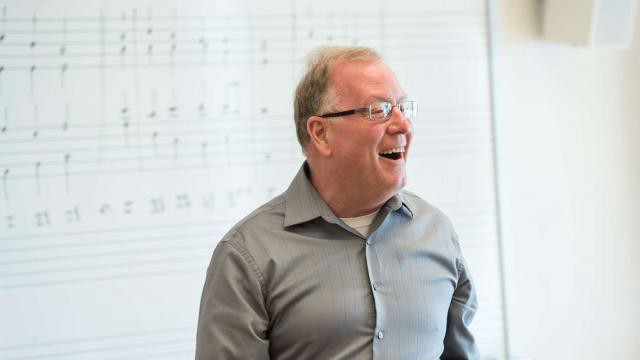
The waning days of summer have us waxing nostalgic in the run up to our season opener, LYRICAL DREAMS — Sunday, September 24th at the Lesher Center in Walnut Creek. All three pieces on the program — Barber Knoxville: Summer of 1915, Stookey YTTE (Yield To Total Elation) and Mahler Symphony №4 — are linked in that they were either inspired by dreams or they use dreams as subject matter. What may be less obvious is the link that two of the pieces share specifically to the year 1915.
The connection is clear for Barber’s Knoxville: Summer of 1915, based on a dreamy meditation on family life by 1940s film critic and screenplay writer James Agee. Written more than twenty years later as a free-form writing experiment and with little subsequent revision, Agee describes the sights and sounds of small town Knoxville, TN, as a 5-year-old child, lying on quilts with his family outside their home in 1915. He hears the clip-clopping of a horse and buggy; the grinding, metallic sounds of a tram; the locusts in the field; the low voices of adults in conversation. The timing is especially poignant as we know that Agee’s father was killed in an auto-accident the following year.

Over on the West Coast, 1915 was the year of the great San Francisco Expo, which brought a vision of a fantastic, optimistic future to a young city that had been ravaged by fire and earthquakes less than a decade earlier. The experience of visiting the World Fair clearly made a big impression on Mill Valley native, A.G. Rizzoli (1896~1981). Some twenty years later, Rizzoli would draw the Yield To Total Elation set of architectural drawings, in which he portrayed friends and family as grand buildings in an imaginary “expeau.” This would in turn inspire Bay Area composer Nathaniel Stookey to create his 2016 piece, YTTE (Yield to Total Elation), which makes its West Coast full orchestra version premiere in our season opener in Walnut Creek on Sunday, September 24, 2017.
Connections to the Past
Learning about these connections inspired us to look back to what else would have been happening in the Bay Area in 1915, in a year that was so memorable to these two artists from a century ago.
1915 in San Francisco

One can only imagine Bay Area residents’ wonder and excitement at some of the sights and sounds of the World Fair, which included:
· A car assembly line —Henry Ford brought his revolutionary production line to the Expo, turning out a new car every 10 minutes which was then driven away to a local distributor for resale.
· Flying machines — In 1915, most Americans had still never seen an airplane. Thanks to brothers and aviation pioneers Allan and Malcolm Loughead (who later changed their last name to “Lockheed”), visitors were able to take brief flights out over the bay, to get a perspective on their city previously only enjoyed by the birds. Stunt pilot Lincoln Beachey entertained crowds with death spirals and loops over the Bay until his plane fatally crashed in March. His replacement, Art Smith, also had a taste for the dramatic, performing nighttime flights with phosphorous flares attached to his plane’s wings, which left trails that lit up the sky.
· The Palace of Fine Arts — housed more than 11,000 pieces of art during the Expo. While all the other buildings were torn down after the fair concluded in December that year, the Palace of Fine Arts was saved and rebuilt in the 1960s after the mother of publishing magnate William Randolph Hearst intervened to restore it.

· The Tower of Jewels in the Jewel City — the centerpiece of the Expo and surely the building that must have most excited would-be architectural draftsman and artist, A.G. Rizolli. The 43-story tall Tower of Jewels was the tallest structure in San Francisco at the time. Adorned with more than 100,000 pieces of polished crystal and colored glass that glimmered in the sunlight, it must have been quite the sight for visitors and residents.
1915 in the East Bay
Meanwhile across the bay…
Walnut Creek, population 500, became the 8th city to be incorporated in Contra Costa County in 1914. The library would be built in 1916, thanks to a grant from the Carnegie Library Foundation, and a sewer was installed on Main Street two years later. Residents would have to wait until 1921 before downtown was paved.

Broadway Tunnel
Think your commute is bad? According to the Lafayette Historical Society, this predecessor to the Caldecott Tunnel was the first tunnel to Oakland through the hills. The tunnel was so narrow that vehicles had to drive down the center of the road to avoid hitting the sides. It was also dark, so drivers would light up newspapers when entering as a signal to those at the other end to wait. In 1915, the tunnel ceiling was raised three feet so autos and trucks could fit.

New Words in 1915
Sadly, Expo stunt pilot Lincoln Beach would not have lived long enough to learn that the word “aerobatics” made it into the Merriam Webster Dictionary in 1915. Other new words from the year that hint at the seisimic social and technological changes taking place include: big deal, car wash, coatrack, coolant, Federal Reserve System, and yo-yo.

The Power of the Past
In conclusion, it’s dizzying to reflect on how much life has changed in the century since 1915 — for many people, that’s just 2 or 3 generations ago. What will the Bay Area look like in 2115? And will the people of that time look back on our time and wonder at our primitive lives?
James Agee and A.G. Rizzoli were two artists who respectively wrote and drew from memories from a common point in time. For Agee, Knoxville in the summer of 1915 was an idyllic time of family life remembered a short time before the devastating death of his father. For Rizzoli, the 1915 Expo was a feast for his design sensibilities, which he channeled some twenty years later into his YTTE drawings. In another sad parallel, Agee and Rizzoli both lost their fathers in 1916 — Rizzoli’s father to suicide — and through their works, both artists honored and remembered their families. Composers Samuel Barber and Nathaniel Stookey were subsequently inspired to interpret and translate these works of art into a new form — to give them new dimension through the medium of classical music. Literally, to amplify them.
The power of nostalgia and memory as a creative impetus for art is undeniable, as is its ability to resonate with composers and audiences through the years. It still has the ability to move us a century later.
Soprano Maria Valdes sings Samuel Barber’s Knoxville: Summer of 1915, with text by James Agee, with the California Symphony at our season opener in Walnut Creek on Sunday, September 24, 2017. (She performs it here in November of 2016 with the Kaleidescope Chamber Orchestra.)
LYRICAL DREAMS is at the Lesher Center in Walnut Creek on Sunday September 24 at 4pm and includes:
Barber’s Knoxville: Summer of 1915
Stookey YTTE (Yield To Total Elation)
Mahler Symphony №4
Tickets are available at 925.943.SHOW and CaliforniaSymphony.org. Prices start at just $33 per concert.
ABOUT CALIFORNIA SYMPHONY
The California Symphony, now in its fifth season under the leadership of Music Director Donato Cabrera, is a world-class, professional orchestra based in Walnut Creek, in the heart of the San Francisco East Bay since 1990. Our vibrant concert series is renowned for featuring classics alongside American repertoire and works by living composers. The Orchestra is comprised of musicians who have performed with the orchestras of the San Francisco Symphony, San Francisco Opera, San Francisco Ballet, and others, and many of its musicians have been performing with the California Symphony for nearly all its existence.
Outside of the concert hall, the symphony actively supports music education for social change through its El Sistema-inspired Sound Minds program at Downer Elementary School in San Pablo, CA. The initiative brings intensive music instruction and academic enrichment to Contra Costa County schoolchildren for free, in an area where 94% of students qualify for the federal free or reduced price lunch program.
We also host the highly competitive Young American Composer-in-Residence program, which this year welcomes its first female composer, Katherine Balch.
California Symphony has launched the careers of some of today’s most-performed soloists and composers, including violinists Sarah Chang and Anne Akiko Meyers, cellist Alisa Weilerstein, and composers such as Mason Bates, Christopher Theofanidis, and Kevin Puts. The Orchestra performs at the Lesher Center for the Arts in Walnut Creek.
For more information, please visit californiasymphony.org.


